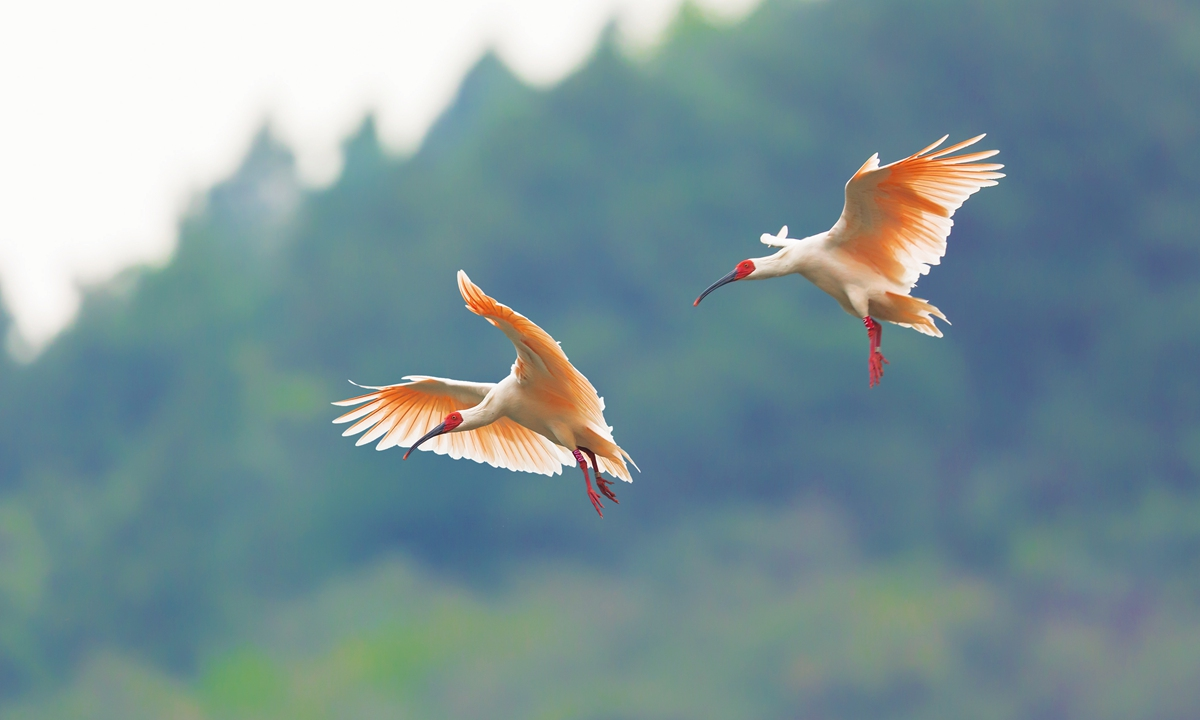
A China-Japan-South Korea friendship exchange program aimed at protecting the endangered crested ibis(朱鹮) was launched in Shanghai on November 12. People from the three neighboring countries shared their experiences in improving ecological(生态的) protection and promised to put forth more effort in dealing with climate change, environmental pollution and promote the harmonious development of humanity and nature.
The crested ibis was once commonly found in China, the Korean Peninsula, Japan and Russia until the 1960s. Unfortunately, the crested ibis became extinct on the Korean Peninsula and in Russia in the 1970s. The last six crested ibises spotted in Japan were believed to be the last of the species on Earth, so the Japanese government decided to put them in captivity(圈养) in 1981 for their protection. Yet the practice turned out to be a failure, as the birds didn’t survive. The last one died in 2003, meaning the extinction of the species in Japan.
A Chinese scientist, Liu Yinzeng, then a researcher at the Chinese Academy of Sciences (CAS), wasn’t willing to accept the idea that crested ibises were extinct in China. In 1978, he led a team to search throughout the country for the bird. A turning point occurred in May 1981, after Liu and his team had searched mountains in nine provinces. Two adult crested ibises were spotted in Yang county in Northwest China’s Shaanxi Province. Following the discovery of these birds, China launched protection efforts to protect and preserve the crested ibis. Thus a “fairy bird revival” miracle was created in China based on the sweat and tears of numerous Chinese people.
Crested ibises are favored by people across Asia. China has presented 14 crested ibises to Japan and South Korea since 1985. Currently, Japan and South Korea are home to a total of more than 1,000 crested ibises living in the wild and captivity. It’s the common wish for Asian countries to restore the crested ibis’ original habitats.
1.What can’t we know about the friendship exchange program?
A Its preparation.
B Its time.
C Its host city.
D Its purpose.
解析:选A。A细节理解题。根据第一段内容可知,该段介绍了“鹮美天下”中日韩友好交流活动于11月12日在上海开幕,旨在保护朱鹮,并未提到为这次友好交流活动做的准备工作。故选A。
2.Where could people see crested ibis in the 1970s?
A In China and South Korea.
B In South Korea and Russia.
C In China and Japan.
D In Russia and Japan.
解析:选C。C 细节理解题。根据第二段第一二句可知,朱鹮最初常见于中国、朝鲜半岛、日本和俄罗斯,但是不幸的是朱鹮于20世纪70年代在朝鲜半岛和俄罗斯灭绝,因此那时人们只能在中国和日本看到朱鹮。故选C。
3.What does Paragraph 3 mainly talk about?
A The importance of joint moves on protecting wildlife.
B China’s favorable natural environment for crested ibis.
C Researchers’ ways to face challenges of the past.
D China’s contributions to protecting crested ibis.
解析:选D。 D 段落大意题。该段主要描述了中国在朱鹮种群数量发展方面做出的努力和贡献。故选D。
4.In which section of a newspaper may this text appear?
A Travel.
B Nature.
C Education.
D Science.
解析:选B。B 推理判断题。本文主要讲了“鹮美天下”中日韩友好交流活动在上海举办,本次研讨会以朱鹮保护工作为切入点,属于自然保护方面,因此最有可能在“自然”版块中读到本文。故选B。